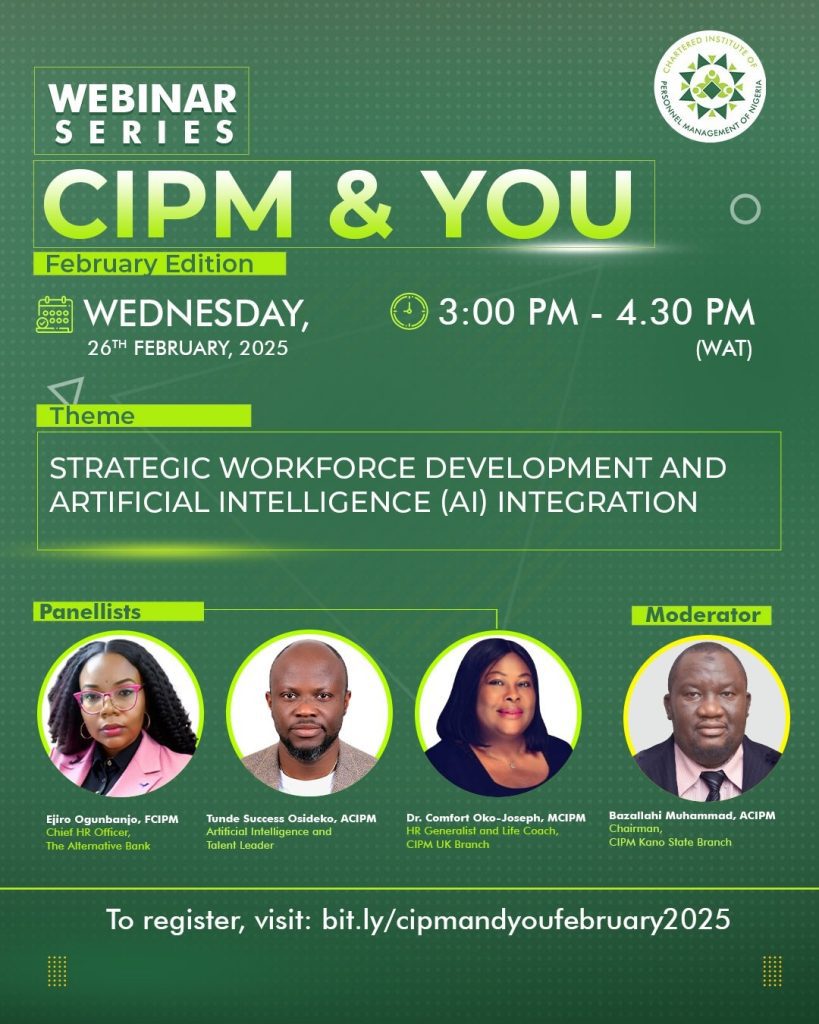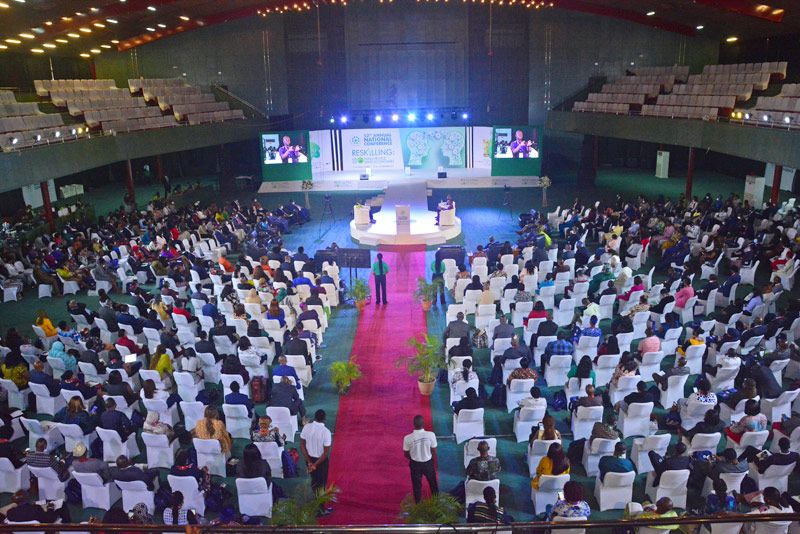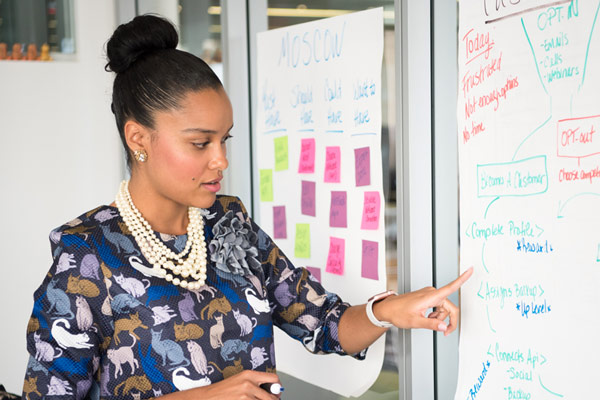Overview
“HR professionals play a central role in ensuring seamless organisational operations. Through this partnership with ProfitAll, we are equipping our Members with innovative tools to enhance value delivery, drive operational efficiency, and support business growth in a digital-first world.”
Human Resource Management is currently at the intersection of history and the future where strategic workforce development converges with artificial intelligence, transforming the way people work, lead and grow. What should ring a bell in our hearts is how the workforce of tomorrow looks like. Do we envision a world driven by automation, AI-powered efficiency, or skills that are yet to be defined? The reality is that AI is not on the horizon; it is already here. The question is not on whether AI should be embraced, but it is on how its powers can be harnessed to build a workforce that is resilient, innovative and future ready. HR professionals do not just adapt to change, they drive the change. AI will not replace human intelligence, but HR leaders who understand AI will replace those who do not. The future belongs to those who are ready to integrate, innovate and inspire.
For Africa, AI has limitless potential, but its success depends on one critical factor which is effective change management. How do we then ensure AI adoption does not widen digital divide? How do we develop the right policies to make AI a tool for workforce empowerment rather than displacement? How do we reskill and upskill our workforce to thrive in the AI era? These are the challenges we must address as HR Professionals.
“The future of work is not about man versus machine, it is about how we collaborate with technology to achieve more” – Satya Nadella, the CEO of Microsoft. Artificial intelligence is not just a passing trend, it represents a fundamental shift in the way work is done, and embracing it is no longer optional. According to the World Economic Forum’s Future of Jobs report, AI is expected to impact around 85 million jobs globally by 2025. However, this shift will also create approximately 97 million new roles, highlighting the transformative potential of AI in the workforce. This paradigm shift is not about workforce reduction, it is about evolution. To stay relevant, we must focus on reskilling and upskilling to meet the demands of the future.
As HR professionals, these are the critical challenges we must tackle to shape a future where technology enhances, rather than hinders, human potential. The CIPM is taking the lead in ensuring that HR Professionals in Nigeria and across Africa are prepared for this transformation.
Challenges in Integrating AI into Talent Management and Workforce Development
- Resistance to Change: A lot ofpeople are anxious about AI, and the media which is sharing information about AI is not helping the narrative. Their frequent reports about AI replacing jobs and skills contribute to a perception of AI as a threat rather than a tool for enhancement. This fosters resistance to change, making it difficult for organisations to embrace AI-driven solutions.
- AI Bias and Ethical Concerns: Since AI models are built on machine learning and data, they are susceptible to biases based on the quality of the data they are trained on. Poor or biased data can lead to inaccurate outcomes, such as false positives, which can negatively impact decision-making in talent management and workforce development.
- Limited AI Literacy Among HR Professionals: A lack of understanding or awareness about AI can make it challenging for HR professionals to see its relevance and potential benefits. Without proper knowledge, AI may seem intimidating, leading to hesitancy in adopting AI-driven tools for HR functions.
How to ensure that artificial intelligence-powered tools and strategies align with diversity, equity and inclusion, and how to mitigate any unintended bias within the system.
Diversity, Equity, and Inclusion (DEI) are gaining significant recognition in human resources globally. A key aspect of this is fostering inclusion, ensuring that everyone is involved, policies and planning are fair, and people management practices promotes equity.
To successfully integrate AI into DEI initiatives, the following steps are essential:
- Eliminate Bias About AI from the Onset: It is crucial to minimise bias in AI systems from the onset. This requires proactive collaboration with AI, starting with the involvement of DEI experts in the development of AI strategies, policies, and deployment processes. These experts should include not just IT specialists or AI users, but those who can ensure that the bias is eliminated.
- Upskilling and Reskilling: A lack of understanding often leads to fear and resistance. Enhancing AI literacy, digital skills, and critical thinking training will help employees embrace AI rather than fear it. The more knowledgeable people are, the better they can align AI with DEI principles.
- Ensuring Human Oversight: AI should not operate in isolation. Organisations must implement human oversight by having diverse HR teams review and assess AI-driven processes. A diverse team overseeing AI usage ensures that decisions align with DEI goals and are free from unintended bias.
- Create Internal Mobility Programmes for AI Adoption: To create an inclusive AI-driven workplace, organizations should establish internal mobility programmes that enable employees to transition seamlessly into AI-related roles. Review and ensure that what we do with AI aligns with diversity and inclusion. There is a need for the creation of internal mobility programmes that enable employees to transition seamlessly into AI, and the use of AI in providing opportunities for employees’ learning and career growth.
Key performance indicators organisations should track to ensure that AI and workforce development strategies are creating long term value for both the employees and the employers
AI can be understood through three key components: it is driven by data, dependent on algorithms, and utilises cloud storage.
The three main workplace applications of AI:
- Personalising the employee experience.
- Making predictions, such as forecasting employee churn and identifying potential leavers before they depart.
- Providing recommendations, such as for recruitment and promotion decisions.
When it comes to measuring AI effectiveness, there are various ways to assess metrics:
- Process Level: For example, when applying AI to recruitment, you may focus on the quality of hires as AI is integrated into the process.
- Skills Perspective: You could assess how many employees within the organisation that have AI literacy, or the number of AI-focused training programs being offered.
- Organisational Level: Here, you examine the financial aspects, such as the investment in AI initiatives and the Return on Investment (ROI) generated by these efforts.
AI deployment can be evaluated from different angles:
- Process Level: This involves analysing specific processes, such as AI’s role in recruitment, or other operational areas.
- Productivity Perspective: Metrics here focus on increases in productivity, such as the number of tasks automated, cost savings from AI deployment, and employee output per hour as a result of AI integration.
How to prepare employees for the future of work, especially with Artificial Intelligence introduced into traditional rules and the types of reskilling initiatives that have proven to be effective
First, we need to shift our mindset about the use of AI. AI can be an incredibly valuable tool for human resource management and workforce development. Whenever we work with data, we are ultimately working with people. One of the key strengths of AI is its ability to generate accurate, reliable data.
Therefore, it is essential to focus on upskilling, learning, and offering training in AI literacy, digital skills, and critical thinking. Personalised learning paths should be created. AI-powered tools and platforms can help tailor development programs to meet individual learning needs. Employees should be encouraged to work alongside AI tools to gain hands-on experience in using them. Additionally, the development of soft skills should be encouraged for employees, as certain roles, especially those involving empathy and emotional intelligence, are irreplaceable by AI. These are crucial aspects of human resource development that AI cannot replace, so it is important to continue nurturing employees in these areas.
Proven initiatives like IBM’s Skills Build program are great examples of collaborative HR practices, demonstrating how an organisation can integrate both AI and the human aspects of work. Other initiatives include Google’s AI for Everyone and AT&T’s Future Ready program.
Furthermore, organisations should organise company-sponsored AI boot camps, pairing employees with tech-savvy mentors who can assist them in navigating the software and understanding its applications. Organisations can also partner with educational institutions to provide certifications in AI tools, especially those they intend to deploy within the company.
How to balance the need for artificial intelligence in improving efficiency with the potential risk of automation, such as displacement of jobs and dehumanization of work
- Proactive Change Management and Workforce Inclusion: Change management should be proactive, ensuring that employees are included in the process. Encourage them to evaluate their roles and explore how AI can be leveraged to automate repetitive tasks, allowing them to focus on more strategic responsibilities. Proactive change management is crucial for organisations looking to integrate AI automation or undergo technological transformations.
- Upskilling and Reskilling: Once areas of a job that can be optimised by AI are identified, it is essential to upskill employees, enabling them to take on new responsibilities rather than displacing or dehumanizing their roles.
- Ensure HR is Involved in These Conversations: HR should always be part of discussions about the responsible use of AI platforms, such as ChatGPT and Copilots. This includes advocating data security when interacting with these platforms and setting clear guidelines on how employees engage with them, rather than opting for an outright shutdown.
By focusing on these three key areas, organisations can effectively deploy AI, boost productivity, and ensure they do not lose sight of the people at the heart of the workforce.
How AI and Other Digital Tools can be used to bridge the skills gap, particularly in the context of remote or hybrid working environment, considering the Nigeria’s education and skill development challenge
If you want to learn about AI, you will likely need to do so outside of the Nigerian educational system, as there is currently a shortage of knowledge and skills related to AI in Nigeria.
First, it is important to understand the difference between automation and AI applications in businesses. While automation and AI have both existed for some time, the current excitement around AI is largely due to the rise of generative AI, as exemplified by the release of ChatGPT.
When it comes to developing AI skills at an organisational level, a company needs to have a clear AI strategy. The organisation must first understand its business needs and how AI can help address them. What are the key processes within the organisation, and how can AI improve them? How can AI be used to personalise services for customers and employees, predict customer churn, or even forecast whether key talent may leave? Organisations should develop strategies outlining how long it will take to acquire or develop these skills. This includes defining the starting point, what will be piloted, and the specific areas to focus on. Then, the next step will be to determine where to find the necessary skill sets. Will they build the skills internally, outsource them, buy off-the-shelf solutions, or develop them in-house? Does the organisation have the right capability to do so? Employees need to reflect on how AI will affect their jobs and what steps they need to take to adapt as well as the skills they need to acquire. Since AI is based on data and relies on algorithms, what programming languages should you learn? You can start with analytics and how to apply it to your work before diving into programming skills. Many resources are available online for self-training, such as YouTube, Coursera, or Udemy. While the approach may differ for organisations and individuals, there are plenty of tools to help you get started.
How artificial intelligence can be used responsibly to track and measure employees’ performance, skills, development and career growth, while respecting individual privacy and fostering a sense of trust within the workforce
One of the major challenges that organisations may face when using generative AI tools is privacy. For instance, imagine you’re the sales director and receive a sales report. Instead of reviewing it line by line, you decide to run it through ChatGPT for analysis. By doing so, you’ve essentially exposed your company’s financial data to the AI model, which means this data could potentially become public knowledge. This raises significant privacy concerns when using AI tools. However, HR departments may argue against using AI tools entirely, though it is important to acknowledge that AI can enhance productivity. To address this, organisations should create clear systems, structures, and guidelines around the responsible use of AI:
- Clearly Define Your AI Strategy: Determine what aspects of AI your organisation is focusing on. If AI is being used as a productivity enabler, decide which parts of AI are relevant. While generative AI, such as ChatGPT, is widely used, other AI tools might be more applicable for some organisations. Generative AI can be particularly helpful in automating operational tasks, such as drafting policies or conducting large-scale data analysis. However, to maintain control over your data, restrict its use to specific tasks. For example, using tools like Copilot, which integrates with Microsoft environments ensures your data remains within the company system.
- Provide Adequate Training, Awareness, and Change Management Support: It is essential to offer training and support to help employees understand the responsible and safe use of AI tools, clarifying what is and what is acceptable.
- Adopt a Collaborative Approach: Engage employees through focus groups and discussions to identify how AI can optimise their work or improve productivity. HR should then assist in integrating these AI solutions into employees’ workflows.
By adopting these strategies, organisations can drive productivity improvements while balancing privacy and ethical concerns for both the organisation and its employees.
How AI can be leveraged to enhance recruitment process in Nigeria particularly in terms of identifying top talents in a competitive job market
Recruitment is one area of HR where AI can be effectively integrated due to the abundance of data involved, which often goes unutilised. AI can significantly reduce the time required to shortlist candidates, and in a competitive talent market, speed becomes a critical advantage. You do not want to post a job and then wait three or four months to find the right candidate. AI can shorten this process, delivering high-quality candidates quickly. An AI system can even rank candidates for you, providing a list of the top 20 in terms of suitability, ranking them from the most to least qualified. When shortlisting manually, it is difficult to differentiate between candidates ranked 1, 2, or 10. However, with AI, you can easily see the rankings and start with the top five. If the first few do not meet your expectations, you can quickly move to the next five.
AI helps improve the quality of talent by providing objective insights, and it can also reduce biases that are inherent in human decision-making. Ultimately, AI reduces recruitment time, improving your time to market. In a competitive talent landscape, especially during a talent shortage or “war for talent,” you need a system that can efficiently shortlist candidates and speed up the hiring process.
The use of AI technologies to identify and nurture leadership talents
AI can play a significant role in identifying and developing leadership talent. As mentioned earlier, AI relies on tangible data that highlights specific behaviours rather than subjective assessments. This helps move beyond the traditional “ticking of boxes” seen in performance management and KPI evaluations. AI can streamline this data, eliminating subjectivity and personal biases. For example, AI can assist in removing personal preferences like “I like you, so I want to make you a leader,” ensuring a more objective process.
Even from the recruitment stage, AI can automate data collection, making the process autonomous. This is crucial because, in many cases, bias in promoting or selecting leaders stems from subjective decision-making. Human collaboration remains key in this process, as AI provides data, while leaders apply judgment. The human aspect is not entirely removed; rather, AI streamlines the process of identifying potential leaders, outlining their development needs, and facilitating succession planning to ensure the growth of future leaders within the organisation.
Conclusion
AI is not the enemy, and there’s no need to fear it despite the common narrative that AI is taking jobs. With proactive knowledge, HR can guide organisations in leveraging AI effectively. HR is responsible for both the people and humanity within the organisation. By embracing AI and the tools it offers, HR can help organisations run productively and performance-driven, all while preserving the core of the organization – the people.
Andrew Spence, HR Transformation Director at Glass Bead Consulting in the UK, once said, “As we design the employee experience, it is crucial to determine when an activity should be carried out by a warm, caring human being, and when it is better to automate it. Get this wrong, and the impact on retention and productivity can be significant.” As HR leaders, we must know when to bring the human touch and when to rely on automation to ensure the best outcomes.
It is important for people to recognise that we are living in an era defined by the 4th Industrial Revolution, a time when technology is at the forefront, and AI will play a crucial role. Let us embrace this change.
What we have seen so far is just the beginning. Currently, Generative AI is considered “weak AI,” which is just the tip of the iceberg. We need to prepare ourselves for what is to come, remembering how. When calculators were first introduced, there was resistance. Today, calculators are an integral part of our lives. The same will happen with AI. So, let us face it with confidence and not fear, especially as HR professionals. There is a growing connection between AI and HR, and we must be ready for it.
This thought leadership piece was adapted from the February 2025 edition of the ‘CIPM and YOU’ webinar and represents the opinions of the panellists during the session.




